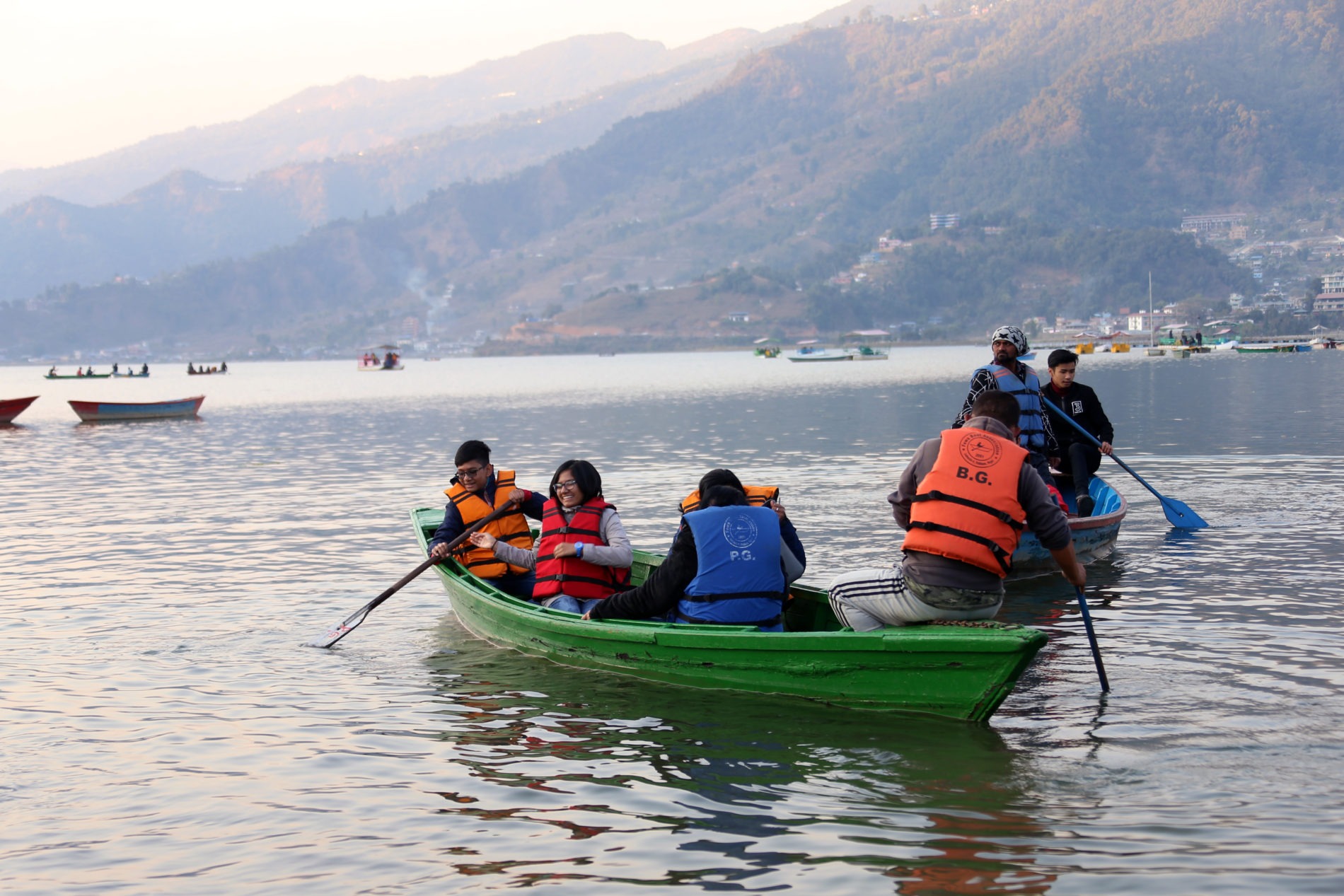POKHARA REGIONAL MUSEUM –
The late king Birendra Bir Bikram shah introduced the museum in 1985. Pokhara Regional Museum talks about popkhara and its people, how life has changed since ‘then’ and ‘now’.
Samples and real life displays of classic utensils, jewelry, gears and weapons and the ethnic practices have been displayed.
MATEPANI GUMBA-
Matepani Gumba (Buddhist Monastery) was established in 1960 A.D. by Nyeshang people who migrated to Pokhara from Manang. The statues are 3 meters tall
No entrance fee is charged to visitors
MAHADEV CAVE –
Considered 600 years old.
The cave was discovered in the 16th century by some local men who stumbled upon it when clearing some grass. Within the dark cave they discovered many shrines and statues dedicated to Shiva and other Hindu deities. Continuing on the 40 or so meters down the cave and you’ll come across the main Shiva temple
TAL BARAHI TEMPLE-
It is a hindu temple of the Goddess Durga (Barahi), the protector of gods. It is located in a small island on the south east section of Phewa Lake in Pokhara. The temple is used for worship by both Hindus and Buddhists.
WORLD PEACE POGODA –
Is a Buddhist stupa Its second name is Shanti Stupa which is in Sanskrit meaning peace.
The spot situated at the height of 1100 meters on the Ananda Hill was chosen by Nichidatsu Fujii, who was the one to help build this stupa. They started to built it with a stone on 12th September 1973.
BINDABASANI TEMPLE –
The temple itself is dedicated to the Hindu goddess Durga, who is Pokhara’s chosen guardian deity.
It is said that the temple was created after the goddess ordered king Khadag Bum Malla to set up a her statue here.
Animal sacrifices are typically presented at the temple on Saturdays and Tuesdays.
SETI RIVER –
The area is near the trijunction of the borders of Nepal, India (Kumaon, Uttarakhand), and China (Tibet).
It is one of the holiest rivers of Nepal, worshipped in Hinduism as a form of Vishnu. three kilometer section where the whole Seti river goes underground.
DAVI’S FALL –
The water forms an underground tunnel after reaching the bottom. This tunnel is approximately 150 m long and runs 30 m below ground level. Visitors can try their luck on the luck pond constructed there by throwing and placing the coin on the statue of God.

 Русский
Русский සිංහල
සිංහල



